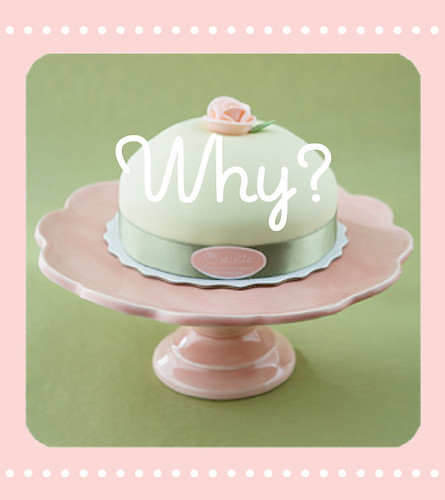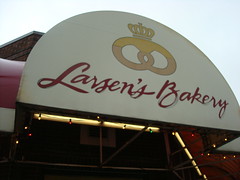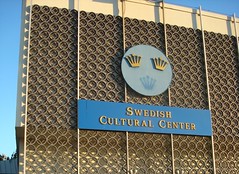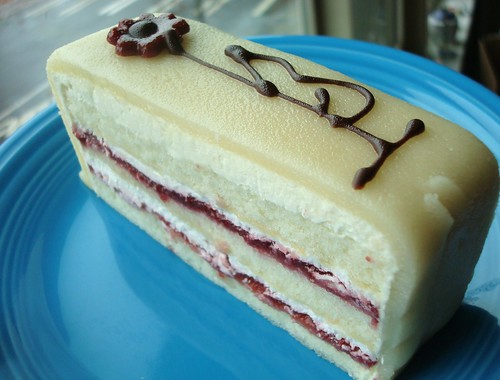
Princess Cake shown is from Miette in San Francisco; photo credit Frankie Frankeny.
Some of you may trouble yourselves mysteries of the natural universe: What is the meaning of life? If a tree falls in the woods, can anybody hear it? Why on earth is Paris Hilton famous?
But we Cake Gumshoes choose to ponder a much bigger (and more delicious) mystery: why is the princess cake green?
First things first though. For those of you not acquainted with the princess cake (or princess torte), we'd like to clarify that we're not talking about the "Princess Cake" that has a severed Barbie doll stacked atop a dome of frilly buttercream (though that one has its moments). No, we're talking about the Princesstårta, a cake which hails from Sweden, where it was invented in the 1930s by cookbook author Jenny Åkerström, who is said to have made it in honor of Sweden's three princesses at the time--Margaretha, Märtha and Astrid. While it's not as common in bakery cases as say, Red Velvet, it's not an exceedingly rare cake either--most urban areas will have at least a couple of bakeries that offer the sweet confection, which is made of alternating layers of light, airy cake, thick pastry cream, and jam, all topped with a sweet jacket of marzipan--often in a dome shape. But perhaps the most striking thing about this cake is how it's nearly always green.
Of course, there are exceptions. For instance, famed Los Angeles restaurant Scandia offered a chocolate-topped version back in the day (which, with the help of pastry chef Chris Jarchow, we made it recently; see above); some bakeries will offer an off-white or pink version. However, it seems to us that most frequently--or at least frequently enough for us to have noticed-- it's an attractive and very signature pistachio tone of green.
So what gives?
Unfortunately, this proved to be quite the challenge. Here's a summation of our epic journey to discover the truth:
First, we hit up the library, where we consulted the serious tome of a book The Professional Pastry Chef by Bo Friberg, in which we found the following passage:
"I am slightly embarrassed to admit that I do not have a definite answer as to why is the marzipan on top of a Princess Cake traditionally colored green. This is a question I have been asked time after time, and believe me, I have tried to find out. It would at least make more sense to me if the cake were flavored with mint or pistachio. Princess Cakes are often made with other colours..."
Our buddy over at ReTorte referenced Friberg's quote too, adding that "My fancy French pastry books do not even mention Princess cake..my only theory is that, as with a lot of stuff in the pastry world, it's green because of tradition. They do A LOT of stuff just out of tradition, even though it makes no sense otherwise!"
P.S. Wanna try to make the Princess Cake? A fantastic recipe can be found on Tartelette, as well as some seriously beautiful pictures!




